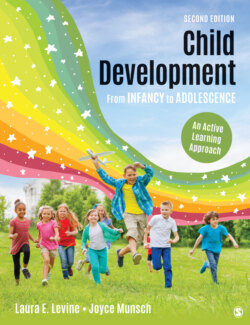Читать книгу Child Development From Infancy to Adolescence - Laura E. Levine - Страница 119
На сайте Литреса книга снята с продажи.
Information Processing
ОглавлениеWhereas Piaget and Vygotsky provide more global concepts about cognition and its development, information processing theory breaks down the way we understand and use information into steps, such as acquiring information, storing it, and retrieving it (Robinson-Riegler & Robinson-Riegler, 2008). When this approach first appeared in the scientific literature, it proposed that we process information in a way that is similar to the way that computers process information, with input of information, activity to use that information, storage of the information, and retrieval when needed. Since then we have realized that our brains are much more complicated than computers, so a newer way of thinking about the memory process has developed, known as the connectionist or neural network model. Using this model, you can think of memory as a neural network that consists of concept nodes interconnected by links, as shown in Figure 2.5 . For example, when we see a white duck, different concept nodes may be activated. One node can represent a specific concept (white), one can represent a higher-order concept (duck), and one can represent a superordinate concept (bird) depending on how the neurons are activated (Robinson-Riegler & Robinson-Riegler, 2008). The concept nodes are analogous to nerve cells, or neurons, in the brain, and the links are connections between individual neurons. When information is stored in memory, it becomes a new node that is connected to other nodes in the network.
Connectionist/neural network model: A model of the processes of cognition envisioned as a neural network that consists of concept nodes that are interconnected by links.
Description
Figure 2.5 Neural network model of memory.
Although each node is connected in some way to other pieces of information in our memory, the strength of these connections can vary, and learning involves modifying the strength of the connections. When input comes into the system (for example, the sight of a bird in flight), certain nodes are activated. If the links between those nodes are strong enough, the output is a concept (in this case, bird). This way of thinking about information processing more closely reflects our current understanding that neurons operate through multiple simultaneous connections with other neurons throughout the brain.
